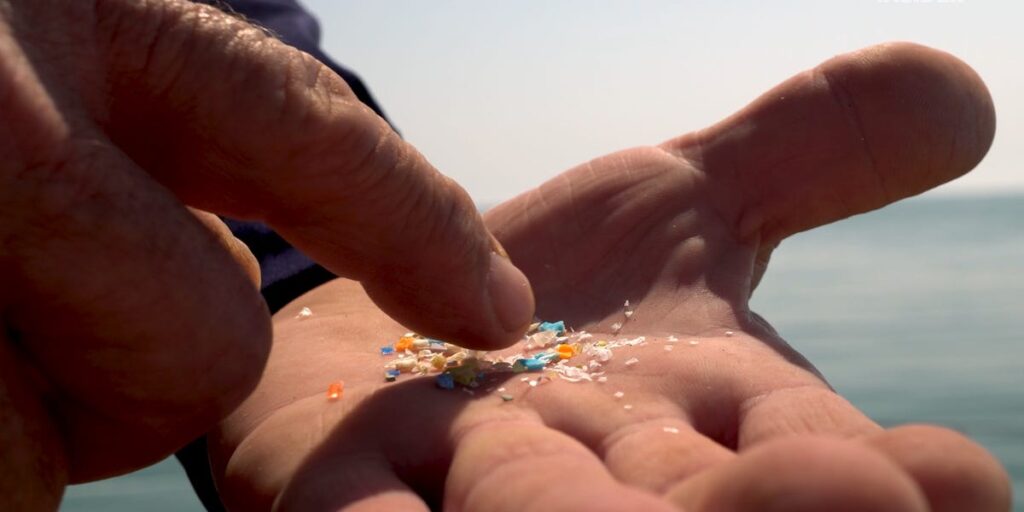- Researchers took samples of human brains from dead people to look for microplastics.
- The brain samples had higher levels of plastic than kidney or liver samples.
- People who died in 2024 had more nanoplastics in their brain samples than those who died in 2016.
The brain is the most well-protected organ in the human body, but it has a surprisingly high amount of microplastic pollution, according to a paper published in Nature Medicine on Monday.
For the study, researchers examined 52 brain samples from autopsies and found they contained seven to 30 times more microplastics and nanoplastics compared to kidney and liver samples.
The amount of plastic the researchers found in the average brain sample is about equivalent to a plastic spoon, according to lead author Matthew Campen.
He said the measurement methods are still being developed. “We’re working hard to get to a very precise estimate,” Campen said in a press conference on Monday.
What this means for neurological health is unclear
The brain samples were taken from the prefrontal cortex, which controls behavior and is involved with decision-making. Most of the plastics found were nano-sized shards or flakes of polyethylene, which is used in plastic bags, plastic food wrapping, and plastic water bottles.
It’s unclear what effect this may have on neurological health. In the study, the 12 people with documented dementia had higher levels of nanoplastics in their brain samples compared to samples from people without dementia.
“We cannot say, from this study, that micro-nanoplastics are causing dementia,” Jaime Ross, an assistant professor of neuroscience at the University of Rhode Island who wasn’t involved with the study, told Business Insider.
Dementia patients often have impaired blood-brain barriers, meaning the elevated levels of micro-nanoplastics may have been a symptom and not a cause of the disease.
“I think it’s going to be challenging for clinicians to distill the important parts of this down for patients,” said Campen, a toxicologist and professor of pharmaceutical sciences at the University of New Mexico. “The big thing that patients need to hear is that it’s not known that there are health effects that are caused by the plastics at this point.”
Microplastics have been found in many parts of the human body, including the heart, liver, testicles, and breast milk. Experts don’t fully understand the health impact, though some studies have linked microplastics to heart disease, strokes, and low sperm count. Researchers are also investigating whether they play a role in the risk of developing certain types of cancers.
“It wouldn’t surprise me if micro-nanoplastics are affecting us. We just don’t know to what extent, yet,” said Ross, who co-authored a paper published in 2023 that found behavioral changes and brain inflammation in mice after they drank microplastic-polluted water for three weeks straight.
The brain has a protective barrier that should protect us against microplastics
Unlike the kidney, liver, and other organs, the human brain has a protective filter called the blood-brain barrier that blocks many harmful pathogens and toxins.
Campen said it’s unclear from his research why so many nanoplastics are managing to cross the blood-brain barrier, but the brain’s high proportion of lipids, or fats, likely plays a role.
“If you’ve ever cleaned a Tupperware bowl that had bacon grease or butter in it, it takes a lot of soap and hot water. It’s really hard to get the plastics and fats apart. We think that’s part of this process,” Campen said.
A silver lining is that microplastics may not accumulate in the human body over time
The latest study didn’t show higher levels of micro and nanoplastics in older brains compared to younger brains, suggesting our bodies can pass these plastics in our feces. “So we’re not just accumulating these over time, over our lifetimes,” Campen said. More research is needed to confirm that finding.
The study did, however, find an increase in micro and nanoplastics in brain and liver samples taken from individuals who died in 2024 compared to 2016. Campen said this increase is likely due to the increase in plastics in the environment.
“This is significant because it suggests that if we were to reduce environmental contamination with microplastics, the levels of human exposure would also decrease,” Tamara Galloway, a professor of ecotoxicology at the University of Exeter who was not involved in the research, said in a statement.
Microplastics are inescapable — they’re in our food, air, water, and trash.
You can reduce your exposure by washing your hands before you eat, removing plastic from food before microwaving, and avoiding drinking from plastic bottles.
Read the full article here


